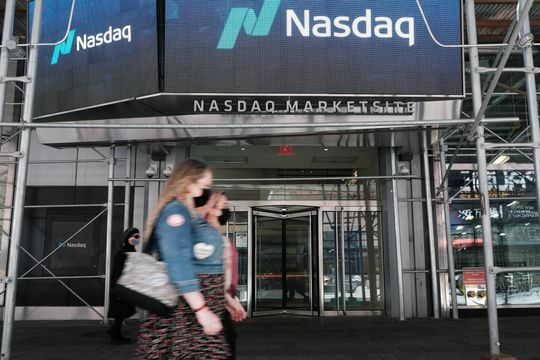The last time the Nasdaq Composite rose 2% and fell by at least 1% was March 20, 2020, the day before the so-called pandemic bottom
Rallies are getting squashed and no lead appears to be safe for the stock market in recent trade.
In fact, the Nasdaq Composite COMP, -1.30%’s intraday reversal on Thursday — when it was up 2.1% at its peak but ended down 1.3% — represented its largest reversal for a loss since April 7, 2020, according to Dow Jones Market Data. The Dow Jones Industrial Average DJIA, -0.89% and the S&P 500 index SPX, -1.10%, which also were trading higher, finished in negative territory as well.
The disintegration of a big intraday uptrend comes after the Nasdaq Composite entered a correction — defined as a decline of at least 10% (but no more than 20%) from a recent peak — for the first time since March 8, 2021, and reflects the fragility of the market as it braces for a regime of higher interest rates and overall less-accommodative policy from the Federal Reserve.
History shows, however, that the intraday turnaround doesn’t appear to be a good sign for the market’s near-term prospects.
Based on days in which the Nasdaq Composite has registered an intraday gain of at least 2% but ended lower, the index tends to perform poorly.
On average, on such occasions, the composite finishes lower by 0.5% in the following session, and is down 0.2% a week later.
It isn’t until we get out a few months before performance improves. Gains for the index 30 days out are better, a gain of 0.5%, while three months out the return improves to a rise of 1.4%, based on Dow Jones Market Data, tracking 2% intraday moves going back to 1991.

So things may turn around eventually.
But to put the move for the Nasdaq Composite into perspective, the last time it rose 2% and fell at least by 1% was March 20, 2020, the day before the so-called pandemic bottom.
The equity market has been under siege at least partly because of the prospect of multiple interest-rate increases from the Fed, which meets Tuesday and Wednesday. Higher rates can have a chilling effect on investments in speculative segments of the market that rely heavily on borrowing, with investors discounting future cash flows. Talk of inflation also has put a damper on the market and is one of the key reasons compelling the Fed to change from a regime of easy-money to one of policy tightening.

